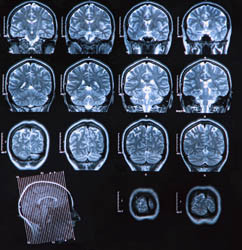How protein clumping affects cell fitness
Disorders like Alzheimer's disease and Parkinson's disease are linked to insoluble protein aggregates that form when proteins do not fold into their normal configuration. Such misfolding increases a protein's tendency to bind to itself, which can result in the protein losing its normal function, or gaining a toxic function. Apart from causing certain human diseases, protein misfolding and aggregation is also a problem in biotechnological applications that require large-scale protein production. The EU-funded ‘Intracellular protein aggregation: Fitness and evolution’ (FITNESS & EVOLUTION) project developed simple cellular models to determine how protein aggregation influences cell fitness. Since there are some instances where protein aggregates are useful to a cell's function, researchers wanted to determine how they are selected for during evolution. They did this by measuring fitness variations in different yeast strains that varied in their propensity to aggregate a specific functional protein. The researchers designed a model system in which the functional protein could have a detrimental, neutral or beneficial effect on yeast cell growth. In conditions where the protein is either beneficial or detrimental, its inactivation by aggregation would have a respectively detrimental or beneficial effect on cell growth. Meanwhile, aggregating proteins that have a neutral effect would presumably have no discernible impact on cell growth. From this study's results, FITNESS & EVOLUTION concluded that protein aggregation has been selected both for and against during evolution. Cells may therefore have evolved quality-control mechanisms to tolerate protein aggregation, which increases cell survival in variable environments by increasing population variability. Understanding how protein aggregation is modulated is important for designing new strategies to combat associated debilitating conditions, as well as for improving biotechnological protein production.







